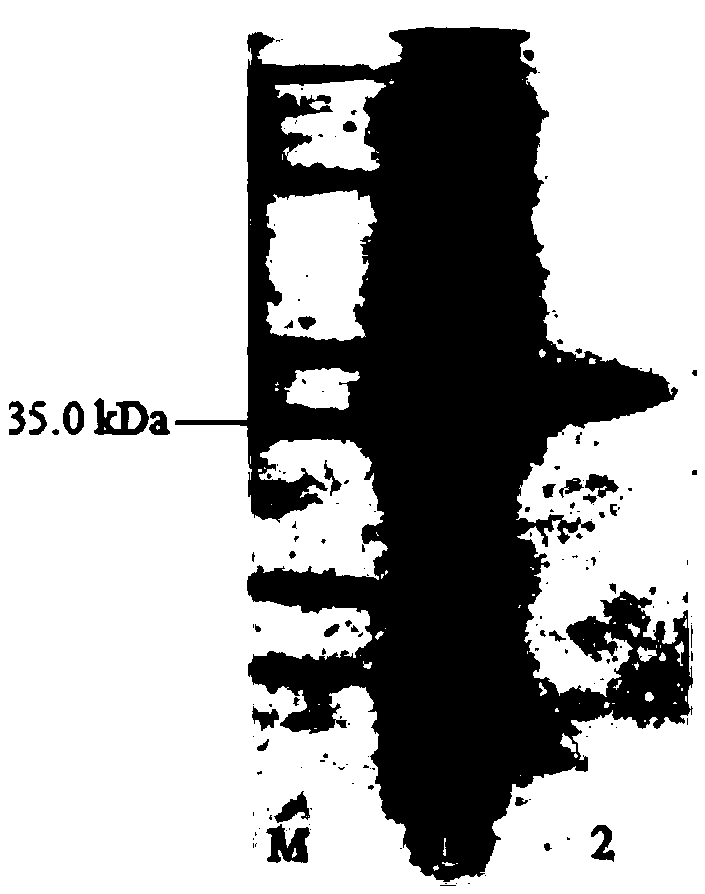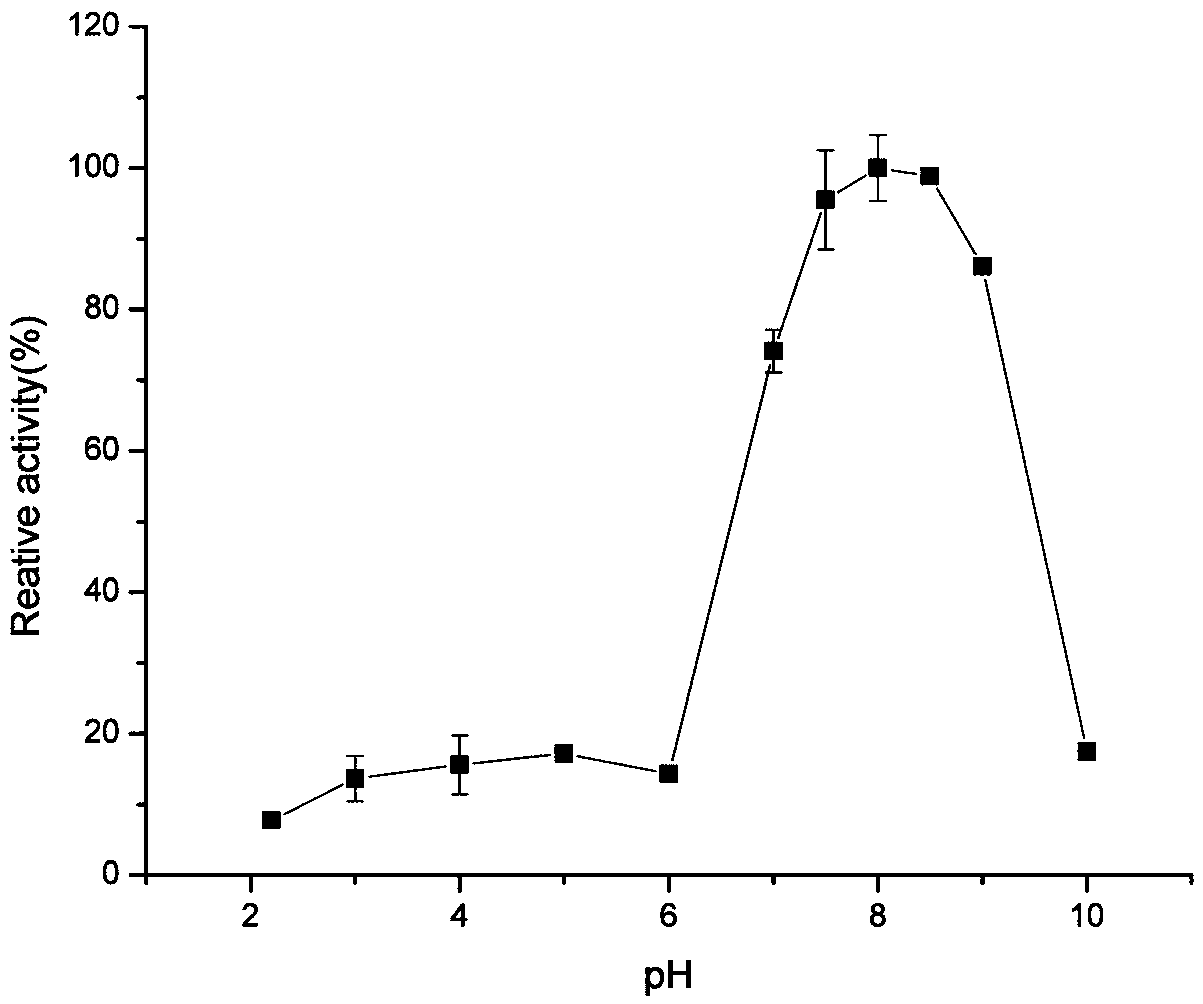Low-temperature catechol 1,2-dioxygenase from animal waste metagenome, and encoding gene and preparing method thereof
A catechol and dioxygenase technology, which is applied in the field of genetic engineering, can solve the problems of unseen and lack of research on animal gastrointestinal environment samples
- Summary
- Abstract
- Description
- Claims
- Application Information
AI Technical Summary
Problems solved by technology
Method used
Image
Examples
Embodiment 1
[0047] Example 1 Cloning of catechol 1,2-dioxygenase gene catPL12
[0048] Microbial genomic DNA was extracted from the feces of the loris (the extraction method can refer to the patent "A method for extracting high-molecular-weight genomes from animal feces", publication number 102586234A), and then use the DNA as a template to incorporate primer C 12 OF and C 12 OR (see Table 1 for its nucleotide sequence) was amplified by PCR. The parameters of the PCR reaction are: denaturation at 94°C for 5 min; then denaturation at 94°C for 30 sec, annealing at 48°C for 30 sec, extension at 72°C for 1 min, and after 30 cycles, incubation at 72°C for 7 min to obtain a gene fragment of about 430 bp, which was recovered and combined with pMD19- T carrier connection, sent to Beijing Liuhe Huada Gene Technology Co., Ltd. for sequencing, and obtained catechol 1,2-dioxygenase gene fragment C 12 Nucleotide sequence of O15-d-13.
[0049] with C 12 O15-d-13 was the core sequence, and three ups...
Embodiment 2
[0054] Example 2 Preparation of low temperature catechol 1,2-dioxygenase CatPL12
[0055] The catechol 1,2-dioxygenase gene catPL12 prepared in Example 1 was connected to the plasmid pEasy-E2 to obtain the recombinant expression vector pEasy-E2-catPL12, and then transformed into Escherichia coli BL21 (DE3) to obtain the recombinant Escherichia coli strain BL21 (DE3) / catPL12. The Escherichia coli strain BL21(DE3) / catPL12 containing the recombinant expression vector pEasy-E2-catPL12 was inoculated in LB (containing 100 μg / mL Amp) culture medium at an inoculation amount of 0.1%, and shaken rapidly at 37°C for 16 hours. Then inoculate the activated bacterial solution into fresh LB (containing 100 μg / mL Amp) culture solution with 1% inoculum, and culture it with rapid shaking for about 2–3 hours (OD 600 After reaching 0.6–1.0), add IPTG at a final concentration of 0.7mmol / L for induction, and continue shaking culture at 20°C for about 20h. Centrifuge at 12000rpm for 5min to colle...
Embodiment 3
[0057] Example 3 Determination of properties of low temperature catechol 1,2-dioxygenase CatPL12
[0058]1. Activity analysis of low temperature catechol 1,2-dioxygenase CatPL12
[0059] Enzyme activity was determined by spectrophotometry [Gouetal.BiotechnolLett, 2012,34(1):117-123]: take 10μl of 150mM catechol substrate solution (final concentration is 0.5mM) and 2.94mL of 50mM buffer solution at reaction temperature Preheat for 3 minutes, add 50 μl of appropriately diluted enzyme solution to react for 5 minutes, and measure the increase in absorbance within 5 minutes at the corresponding wavelength. The molar extinction coefficient of the catalyzed product cis,cis-hexadienedioic acid at 260nm is 16800 / Mcm with catechol as the substrate. One enzyme activity unit (U) is defined as the amount of enzyme required to catalyze a substrate to produce 1 μmol of the corresponding product per minute under given conditions.
[0060] 2. The method for determining the optimal pH and pH ...
PUM
 Login to View More
Login to View More Abstract
Description
Claims
Application Information
 Login to View More
Login to View More - R&D
- Intellectual Property
- Life Sciences
- Materials
- Tech Scout
- Unparalleled Data Quality
- Higher Quality Content
- 60% Fewer Hallucinations
Browse by: Latest US Patents, China's latest patents, Technical Efficacy Thesaurus, Application Domain, Technology Topic, Popular Technical Reports.
© 2025 PatSnap. All rights reserved.Legal|Privacy policy|Modern Slavery Act Transparency Statement|Sitemap|About US| Contact US: help@patsnap.com



